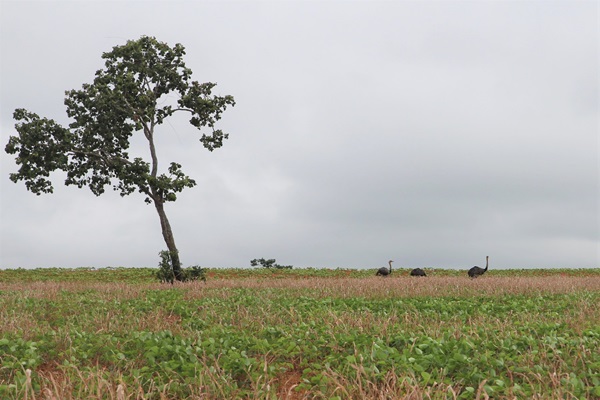1 billion ‘dryland-like’ hectares under threat, FAO study confirms
Rome – An additional one billion hectares of land – so called “presumed drylands” face similar challenges to the world’s drylands, according to a new report launched today by the Food and Agriculture Organization of the United Nations (FAO).
The report, Valuing, restoring and managing presumed drylands: Cerrado, Miombo–Mopane woodlands and the Qinghai–Tibetan Plateau, makes the distinction between official drylands, which are defined by water scarcity and register an aridity index of less than 0.65, and ‘presumed drylands’, which are areas with dryland features and seasonal water shortages, but an aridity index of 0.65 or higher.
The study confirms the existence of 1 075 million hectares of presumed drylands, in addition to the 6.1 billion hectares of official drylands that already cover 41 percent of the planet’s land surface and are home to 2 billion people.
It also shows that presumed drylands contain 322 million hectares of forest, and that forests, other wooded land and trees are present in half of presumed dryland areas.
Presumed drylands are present across all continents, but most are found in Africa, South America and Asia, the assessment reveals.
“Presumed drylands are important because many of them are home to a large number of people who rely on the land for their livelihoods, as well as containing significant biodiversity and helping to adapt to and mitigate climate change impacts through tree cover,” said FAO Forestry Officer Fidaa F. Haddad.
“However, presumed drylands are undervalued, poorly researched, and at risk of becoming real drylands in the near future unless they receive greater attention and investment,” Haddad added.
Unsustainable use
The report shows that presumed drylands are under threat from unsustainable use, such as overgrazing or deforestation for conversion to agriculture. Exacerbated by climate change, this leads to land degradation and desertification, reduces productivity, and threatens the food security, livelihoods and well-being of presumed dryland populations.
The study examines the characteristics and challenges of the three largest presumed dryland zones – Brazil’s Cerrado ecoregion, China’s Qinghai–Tibetan Plateau, and Southern Africa’s transboundary Miombo–Mopane woodlands – and offers possible solutions to halt and reverse degradation.
Recommendations include the adoption of agroforestry approaches, such as silvopastoral systems that combine livestock rearing with the provision of fruits, timber and carbon sequestration, and more sustainable pasture management approaches, such as grazing rotation schemes.
The report presents potential investment scenarios, comparing a business-as-usual approach to land degradation neutrality, and highlights opportunities presented by major initiatives such as the UN Decade on Ecosystem Restoration, co-led by FAO and the United Nations Environment Programme (UNEP), to enhance and accelerate restoration efforts, and the Seoul Forest Declaration at the recent XV World Forestry Congress.
An economic assessment also underlines the need to create an environment conducive to investing in sustainable activities in presumed drylands. Local and national policies will be key to the success of any initiative aimed at sustainably managing, protecting, and restoring the presumed drylands’ land resources, the report stresses.
“We need to invest in more sustainable land and forest management approaches now rather than later, when a greater proportion of land will have been degraded,” said Haddad.
FAO at the Abidjan COP15 event
The new report was launched at a side-event of the 15th session of the Conference of the Parties (COP15) of the United Nations Convention to Combat Desertification (UNCCD), which is currently taking place in Abidjan, Côte d’Ivoire where FAO is leading discussions in promoting sustainable land management and restoration of degraded lands and impoverished soils.
“We need to take urgent and bold actions to meet the growing demand for food, feed, biofuel and fibre, while conserving biodiversity and reducing the burden on natural resources and ecosystems,” said FAO Deputy Director-General Maria Helena Semedo who is leading FAO’s delegation. “Addressing land degradation through the restoration of production ecosystems using a holistic, landscape and cross-sectoral approach is crucial for food security and resilient livelihoods and at the heart of agrifood system transformation.”
During the week-long Conference, FAO signed a $20 million project with the Global Environment Facility and the Government of Cote d’Ivoire as part of the “Abidjan Legacy Programme” to promote deforestation-free cocoa value chains and restore degraded cocoa-forest landscapes in the country. FAO organized a series of High-Level events including the launch of a FAO-UNCCD technical guide marking the 10th anniversary of the Voluntary Guidelines on the Responsible Governance of Tenure of Land, Fisheries and Forests in the Context of National Food Security, and the report, State of the World’s Land and Water Resources for Food and Agriculture: Systems at breaking point.

